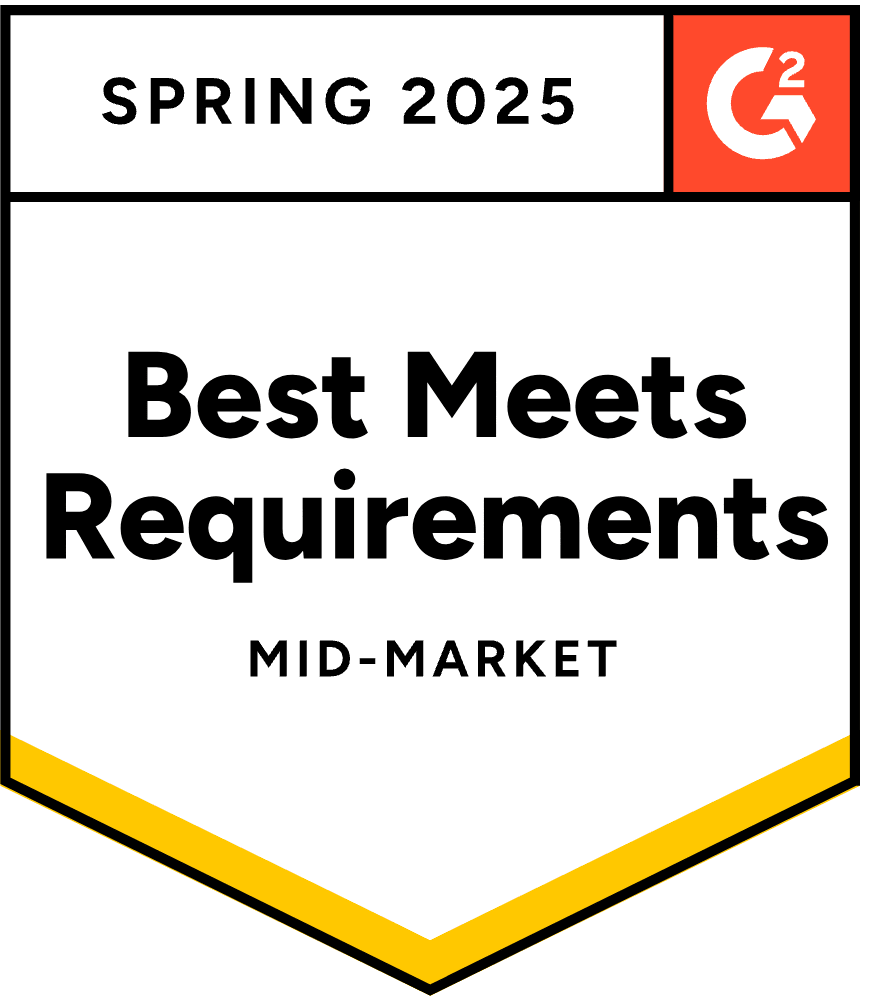- Blog
- Pop-Up Marketing: Tips & Best Practices to Boost Conversions in 2025
Pop-Up Marketing: Tips & Best Practices to Boost Conversions in 2025
-
Nikolett Lorincz
- Conversion
- 6 min read
Table of Contents
Pop-ups: love them or hate them, they’re an undeniable force in digital marketing.
Let’s be honest—pop-ups can be annoying when they’re used in the wrong way. But, when they’re done right, pop-ups can be a total game-changer for your business and an integral part of your marketing strategy.
If you’ve been wondering how to make pop-ups work for you, you’re in the right place. In this article, we’ll discuss the essentials of pop-up marketing and discover how to design them effectively.
Let’s get started!
What is popup marketing?
Pop-up marketing involves using small overlays that appear on website visitors’ screens while they browse a website.
These pop-ups can be used to capture email addresses, promote special offers, or guide users towards specific actions.
There are various types of pop-ups, each serving different purposes:
- Entry pop-ups: An entry pop-up (or welcome pop-up) is perfect for immediately capturing attention and making a strong first impression. They appear as soon as a visitor lands on the site. They’re often used to collect email addresses or announce site-wide promotions, seasonal sales, and other important updates.
- Exit-intent pop-ups: An exit-intent pop-up aims to retain visitors who are about to leave without converting. They can be highly effective for reducing cart abandonment and capturing leads.
- Scroll pop-ups: A scroll pop-up engages users who have already shown interest by scrolling through your content. They’re ideal for promoting content upgrades and encouraging social media shares.
- Time-delay pop-ups: A time-delay pop-up targets engaged users who have spent some time on your site. They’re useful for offering discounts or promotions.
Why does popup marketing work?
Pop-ups work because they tap into fundamental psychological principles that drive human behavior.
Let’s explore these principles in detail:
- Urgency: Pop-ups often create a sense of urgency by highlighting limited-time offers or imminent deadlines. This compels users to act quickly rather than procrastinate.
- Scarcity: Pop-ups leveraging scarcity might advertise a limited number of products or exclusive access to content. This technique makes the offer seem unique and desirable, encouraging users to engage before it’s too late.
- Attention: Pop-ups are designed to capture the user’s attention by interrupting their browsing experience with a relevant and compelling message. This interruption, when done correctly, can shift the user’s focus and encourage them to take the desired action.
The effectiveness of pop-ups isn’t just theoretical. Numerous studies demonstrate their impact on conversion rates.
For instance, our data shows that the top 10% of pop-ups convert at an impressive 42.35%.
Real-world examples further illustrate the success of pop-up marketing. Many of our case studies demonstrate how effectively implemented pop-ups can significantly boost sales.
For instance, the Lammle’s online store boosted online sales by 23.5% with the help of popups.
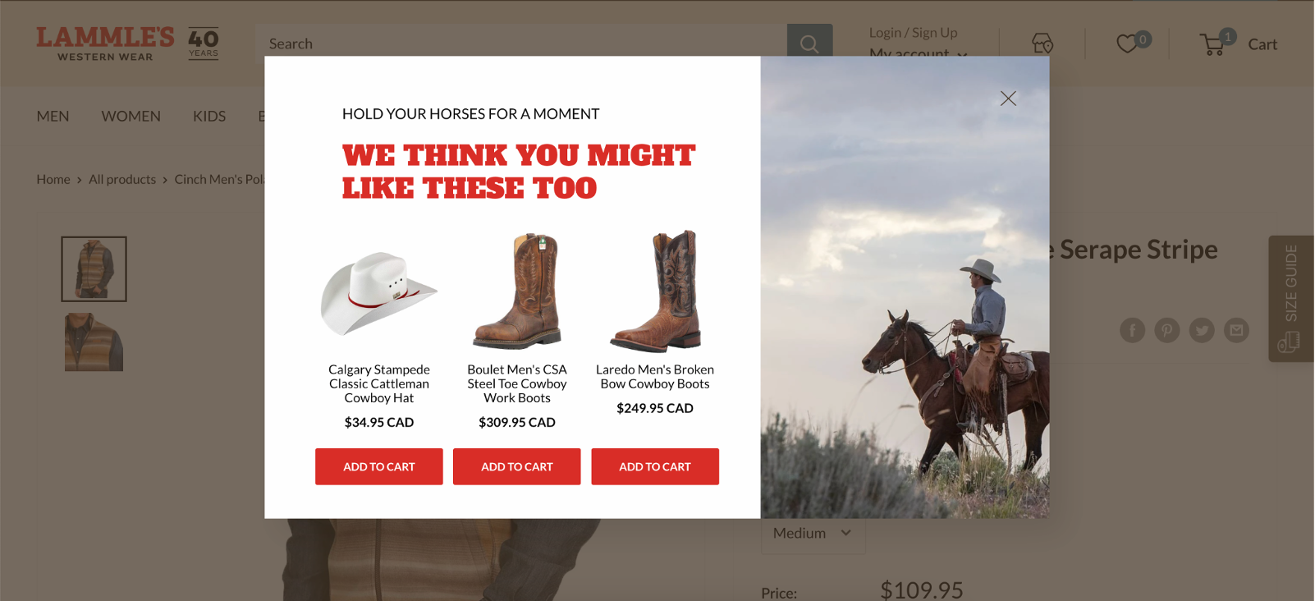
Christopher Cloos improved their ecommerce conversion rate (the number of people making purchases) by 37%.
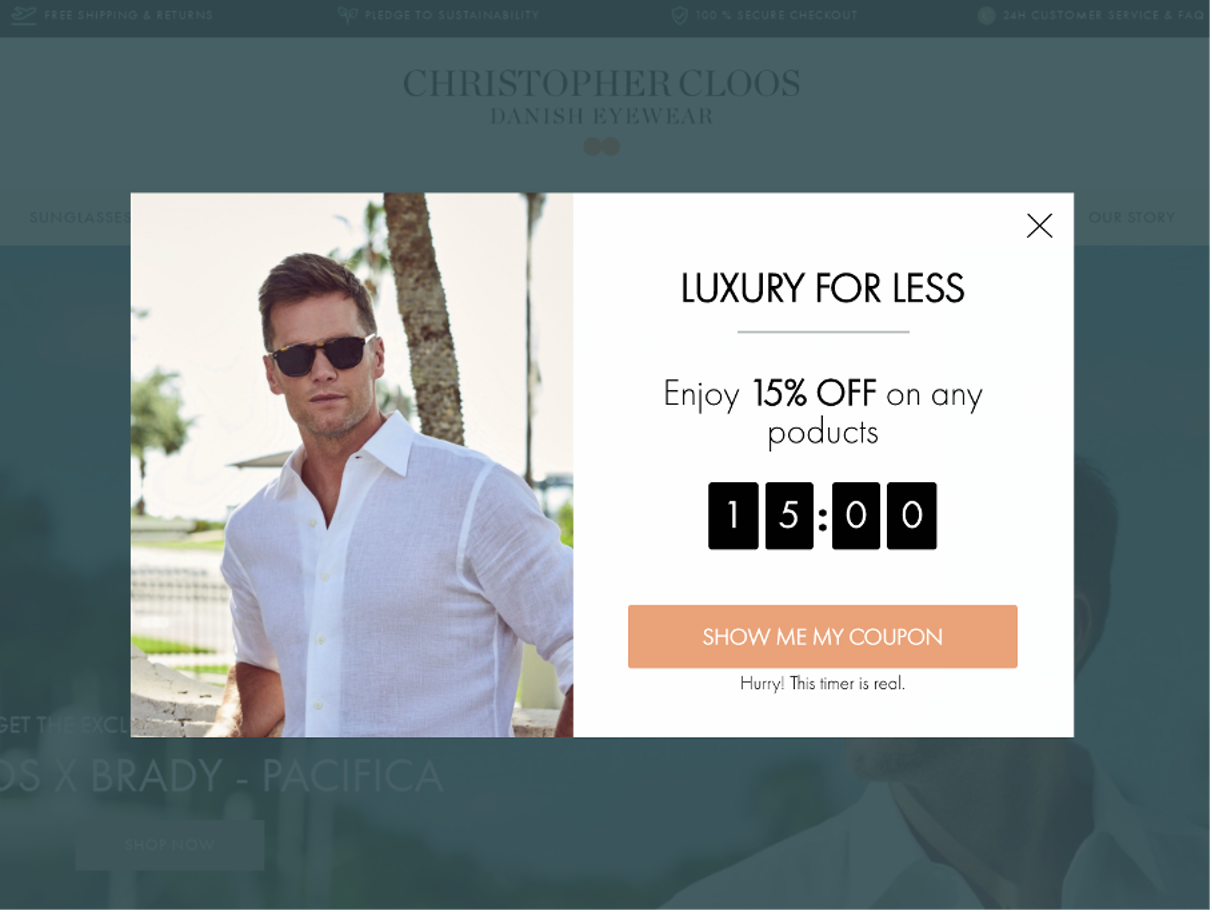
You can explore more success stories in detail here.
How to design effective popups?
Now that you understand why they work so well, let’s explore the details of designing pop-ups that capture attention and drive conversions.
A well-designed pop-up can significantly enhance the overall pop-up experience for users, making it more engaging and enjoyable.
Here’s how you can create pop-ups that your audience will appreciate and act upon.
Principle #1: Context
Your pop-up message should connect with what’s on the webpage but not repeat it.
For example, if a visitor is on a product page checking out one of your products, you wouldn’t want to waste your opportunity with a pop-up message that simply reiterates what’s on the product page. Instead, use pop-ups to offer relevant product recommendations or additional incentives (like discounts).
This approach prevents annoyance and adds value to the visitor’s experience.
Principle #2: Relevance
Relevance is key to avoiding the dreaded “X” button. Pop-ups should provide answers or offers related to what the visitor is already looking for.
If someone is searching for wedding rings, a pop-up about necklaces is irrelevant and likely to be ignored.
Instead, offer guidance on finding the perfect wedding ring, enhancing their shopping experience and increasing the chances of a sale.
Principle #3: Personalization
Personalization tailors the message to the individual visitor. Different users have different needs, and your pop-ups should reflect this.
Advanced targeting techniques can help you show specific offers based on the visitor’s behavior and preferences.
5 best practices to create effective popups
With a solid understanding of the principles behind effective pop-ups, let’s explore some more actionable best practices that will help you create pop-ups that convert.
1. Include a clear message and call-to-action
Your pop-up’s message should be concise and compelling, leaving no room for ambiguity.
A strong call-to-action (CTA) is crucial. It tells users exactly what to do next and why they should do it. For example, instead of a vague “Click Here,” use specific CTAs like “Get Your 20% Discount Now” or “Join Our Newsletter for Exclusive Tips.”
Check out this example from BÉIS Travel, where the message and the call-to-action are crystal clear:
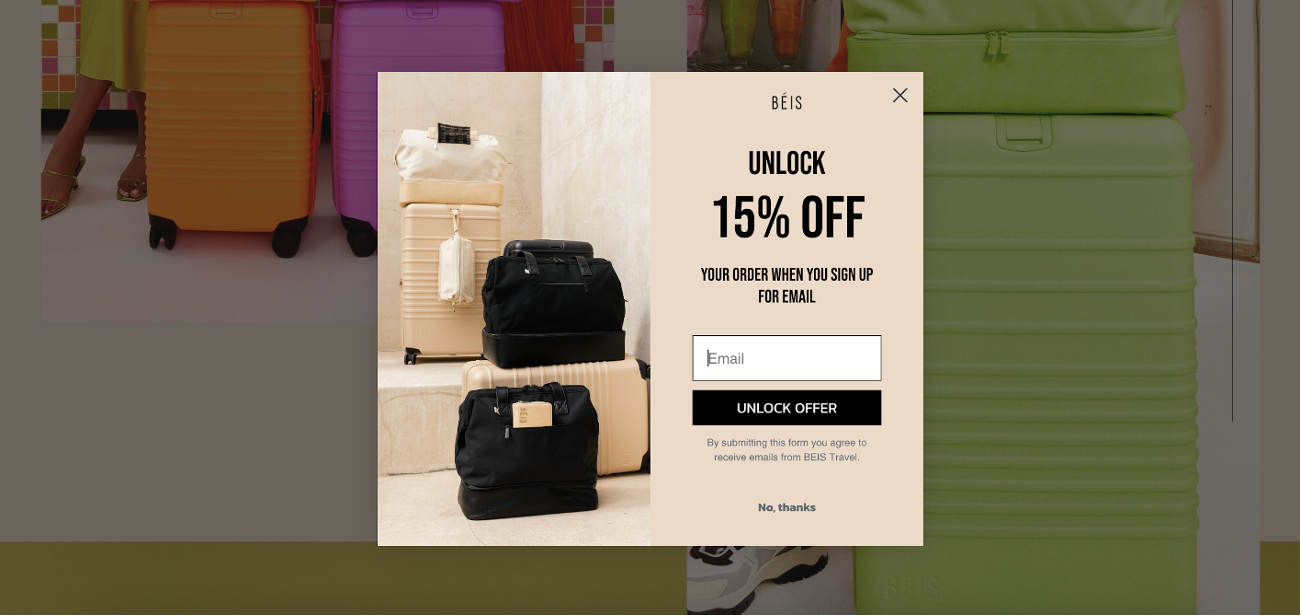
The clearer and more direct your message and CTA, the more likely users will be to take the desired action. A compelling message can also generate buzz and excitement among users, driving engagement and interest.
2. Craft a motivating value proposition
To entice users, your pop-up must offer something valuable.
Highlight the benefits they’ll receive by taking action. This could be a great discount, like in the example below from The Oodie:
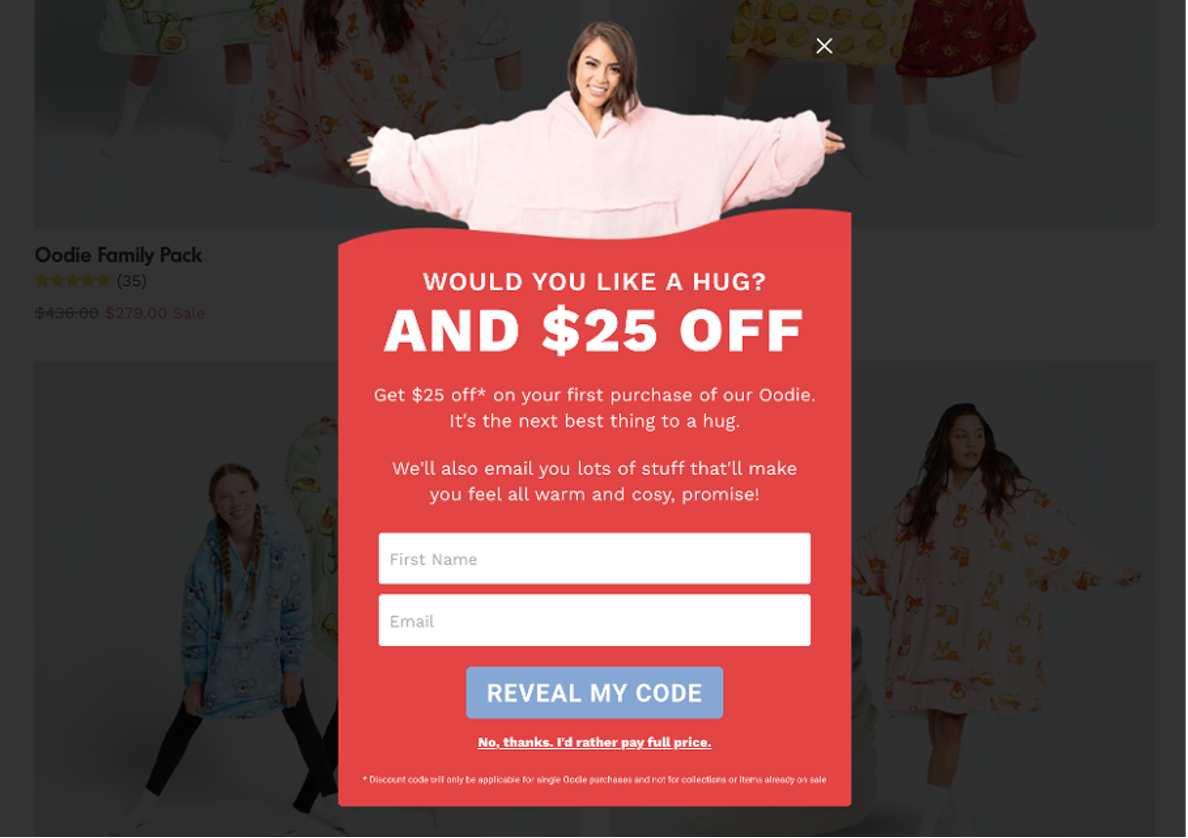
Or a freebie:
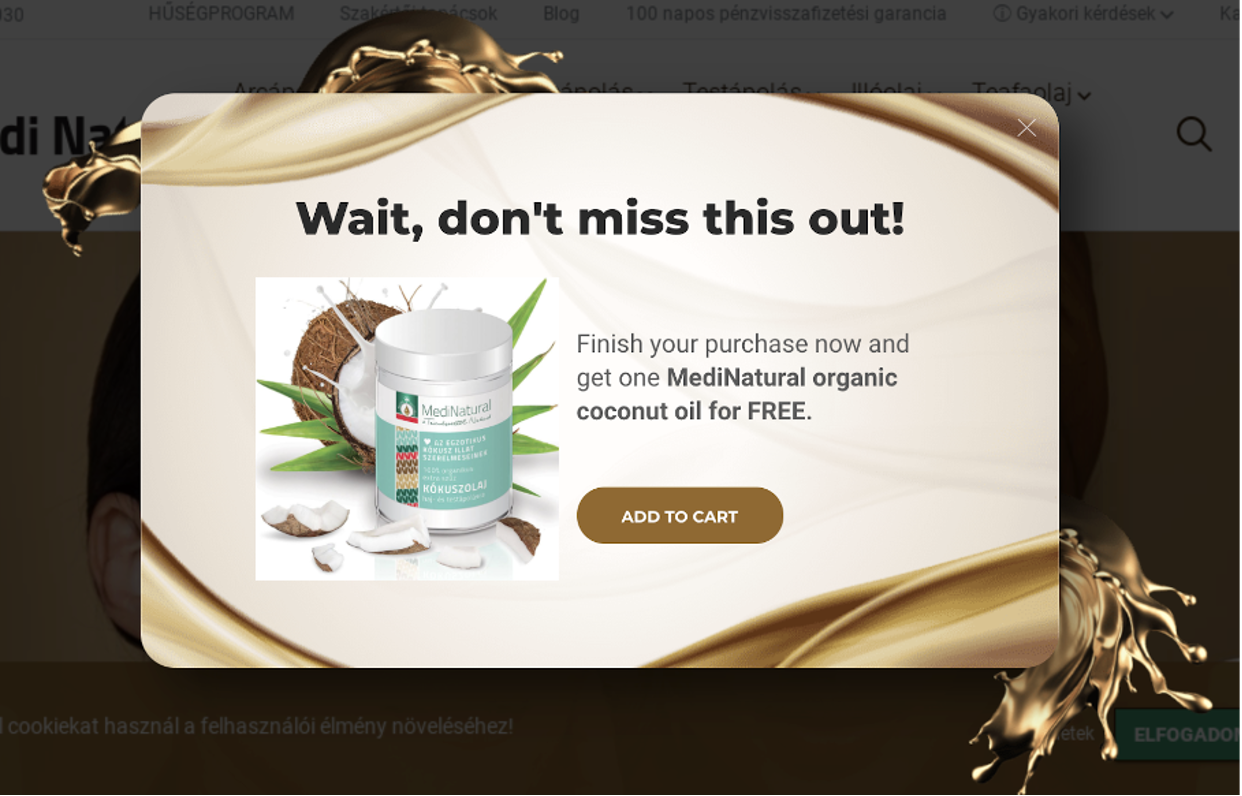
The key is to make the offer so appealing that it becomes irresistible.
Remember, the perceived value of the offer should outweigh any minor inconvenience the pop-up might cause.
A strong value proposition can also help spread awareness about the offer, increasing visibility and attracting new customers.
3. Handle objections and fears
Users often hesitate to buy due to concerns about quality, security, or whether they’ll be satisfied with their purchase. To ease their minds, address these objections directly within the pop-up.
You can use social proof by showcasing customer reviews, testimonials, or ratings to build credibility.
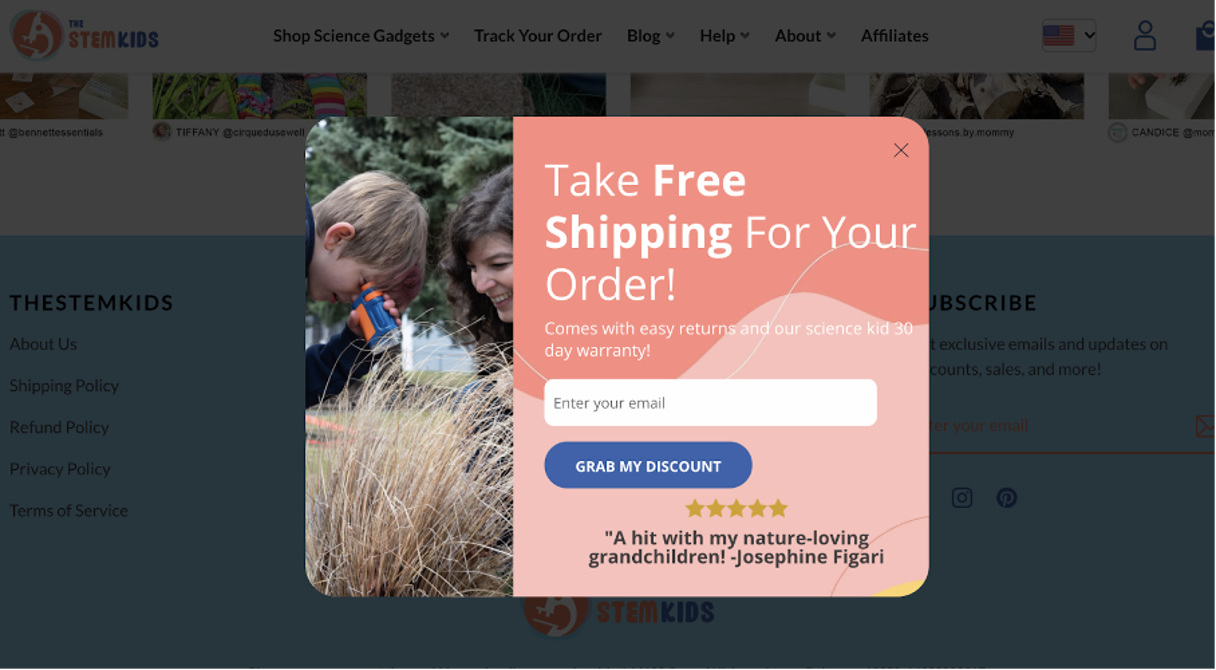
Highlighting your money-back guarantee can also reassure users, letting them know they can shop with confidence and return the product if they’re not satisfied.
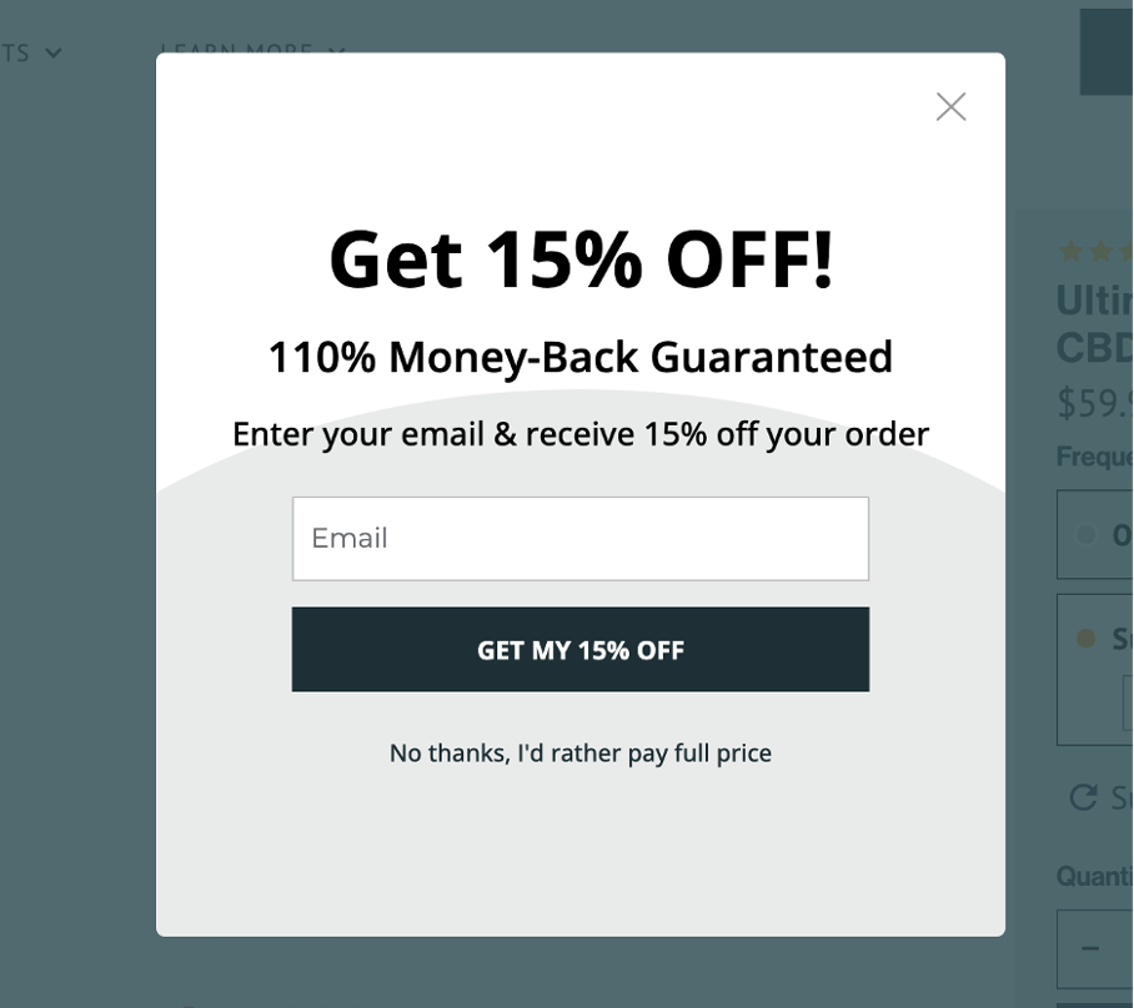
By preemptively tackling these fears, you build trust and significantly increase the likelihood of user engagement.
4. Increase FOMO
Fear of missing out (FOMO) is a powerful psychological trigger.
Creating a sense of urgency in your pop-ups can spur users into action. Use phrases like “Limited time offer,” “Only 5 left in stock,” or “Offer ends tonight.”
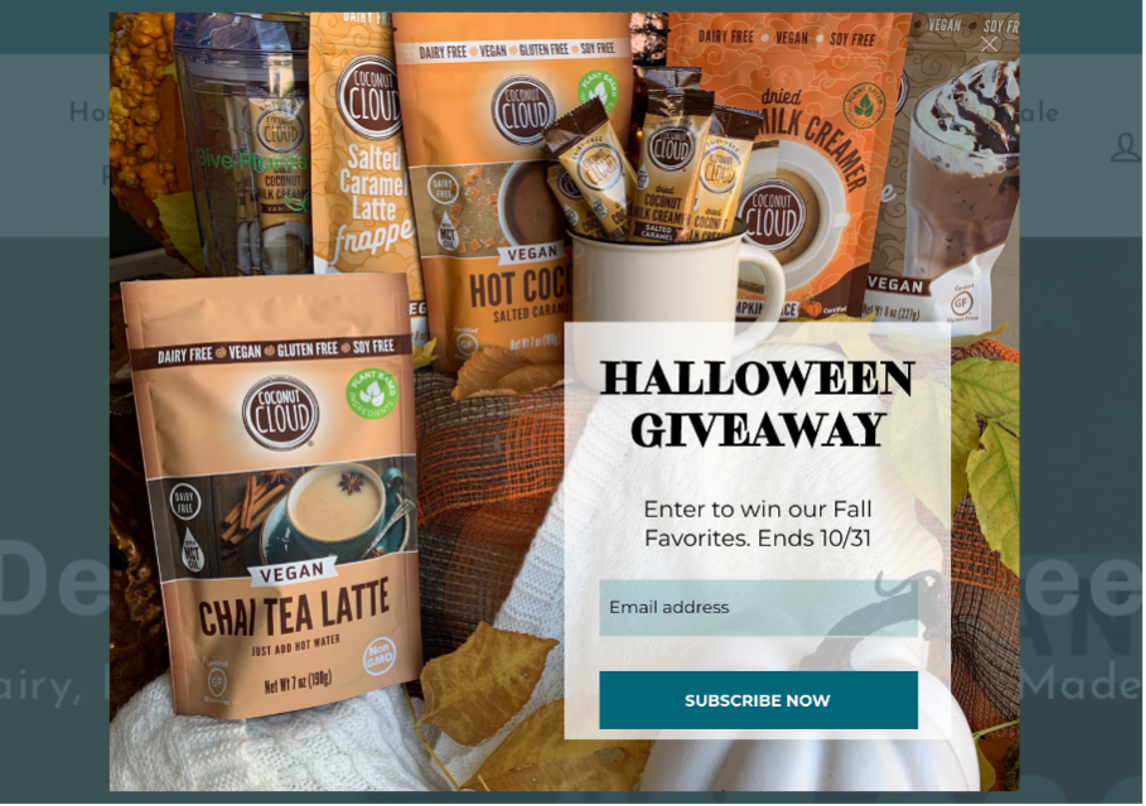
You can also add a countdown timer to increase urgency:
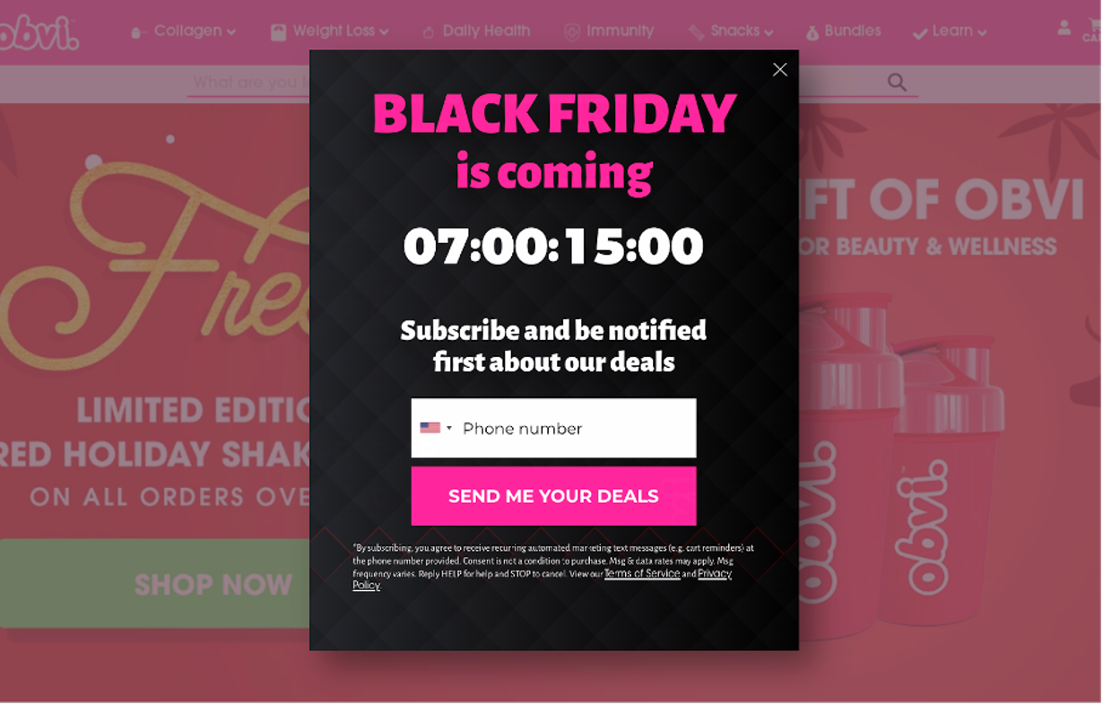
Highlighting scarcity or time-sensitive deals makes users feel that they need to act quickly or risk missing out on a valuable opportunity. This urgency can significantly boost your conversion rate.
5. Emphasize the value
Make sure the value proposition is incredibly clear and unmistakable—users need to understand precisely what they gain by taking action.
This could range from a substantial discount to exclusive access to a new product or service. Clearly stating, “Save $50 on your next purchase” or “Get exclusive access to our members-only content” makes it hard for users to pass up the offer.
Check out this example:
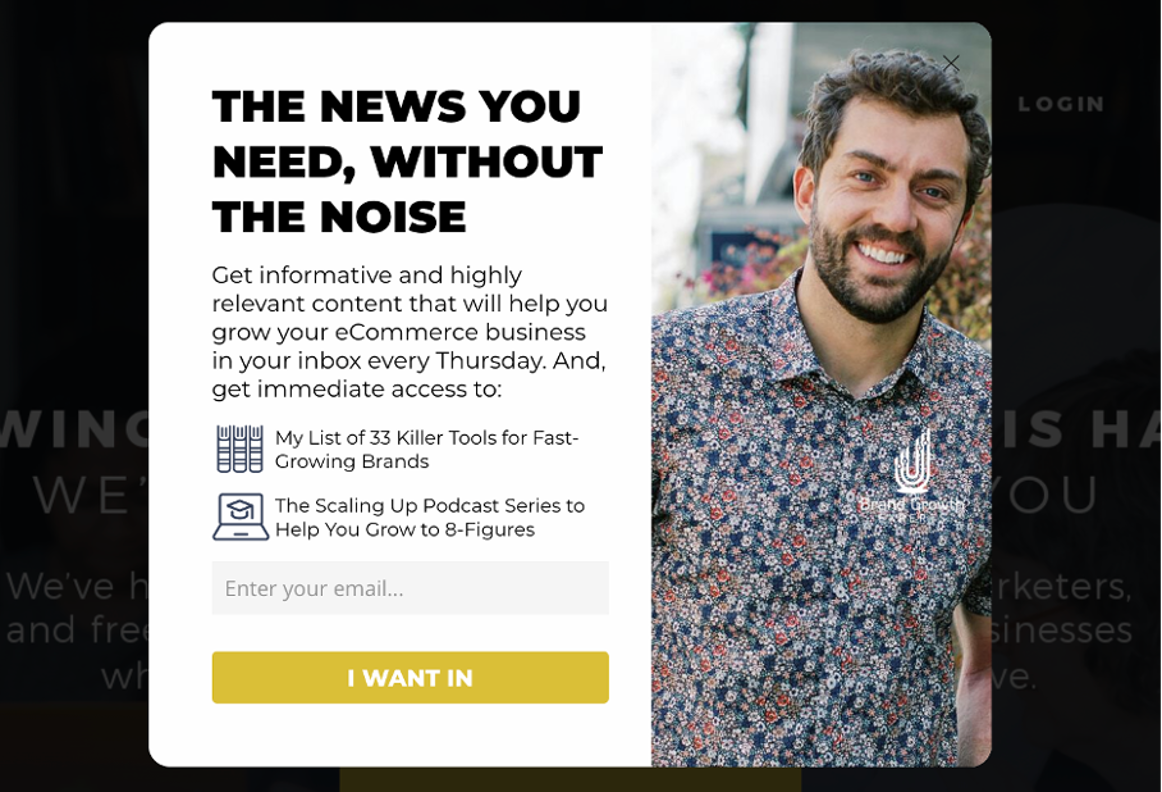
The more explicitly you communicate the value, the more effective your pop-up will be.
How to create your own popups?
Creating effective pop-ups doesn’t have to be a daunting task, especially with tools like OptiMonk.
This platform simplifies the process, allowing you to design, target, and deploy pop-ups that convert.
Here’s a step-by-step guide on how to create your own pop-ups with OptiMonk.
Step 1: Select a template
OptiMonk provides a wide range of customizable pop-up templates designed to suit different needs and styles.
Browse through the template library and select one that aligns with your brand aesthetics and campaign objectives.
Step 2: Customize your pop-up
Customization is key when it comes to creating an effective pop-up. Use OptiMonk’s intuitive drag-and-drop editor to customize the template you’ve chosen.
Here’s what you can do:
- Edit text: Modify the headline, body text, and call-to-action (CTA) to make your message clear and compelling.
- Add images: Include images or graphics that complement your message and grab attention.
- Change colors and fonts: Ensure the pop-up matches your brand’s look by adjusting the colors and fonts.
- Add incentives: If you’re offering a discount, coupon, or freebie, make sure it’s prominently displayed.
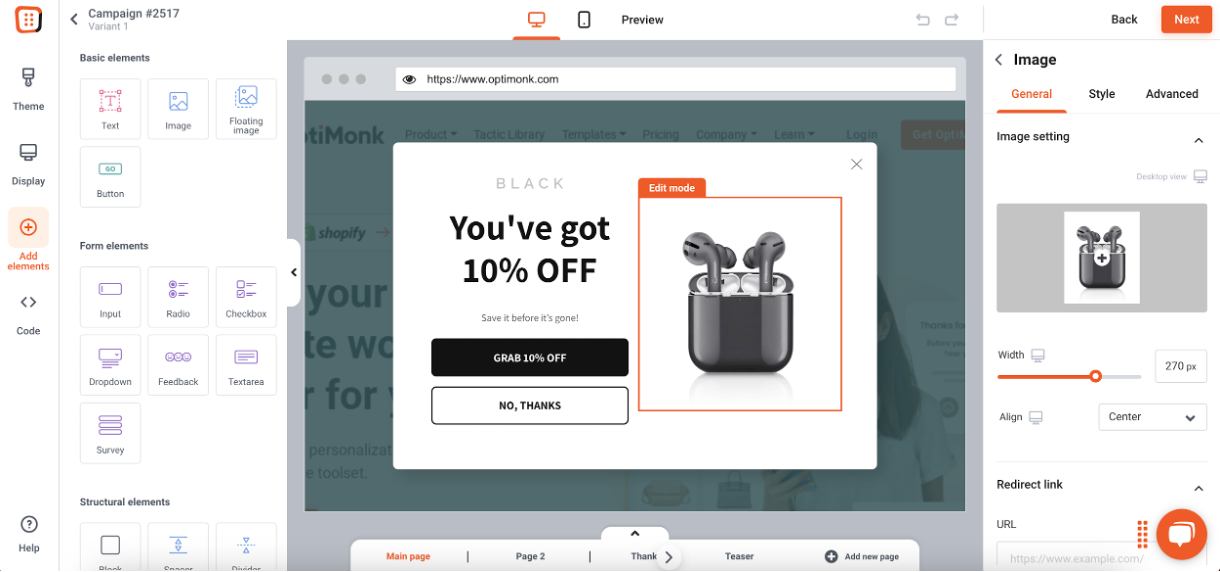
Step 3: Configure triggers
Triggers determine when your pop-up appears. OptiMonk offers various triggering options, including:
- Exit-intent: Show pop-ups when users are about to leave your site.
- Time delay: Display pop-ups after a visitor has spent a certain amount of time on a page.
- Scroll percentage: Trigger pop-ups when a user has scrolled down a specific percentage of the page.
Step 4: Set up targeting rules
Effective targeting ensures your pop-ups reach the right audience at the right time. OptiMonk allows you to set up advanced targeting rules, such as:
- Behavioral targeting: Show pop-ups based on user behavior, such as time spent on the site, pages visited, or scroll depth.
- Geotargeting: Display pop-ups to users from specific geographic locations.
- Device targeting: Customize pop-ups for different devices, ensuring they look great on both desktop and mobile.
Step 5: Launch your pop-up
Once you’re satisfied with the design and functionality, it’s time to launch your pop-up.
Simply activate the campaign from your OptiMonk dashboard, and it will start appearing to your targeted visitors based on the rules and triggers you set up.
Step 6: Monitor and optimize
After your pop-up is live, you can monitor its performance through OptiMonk’s analytics dashboard.
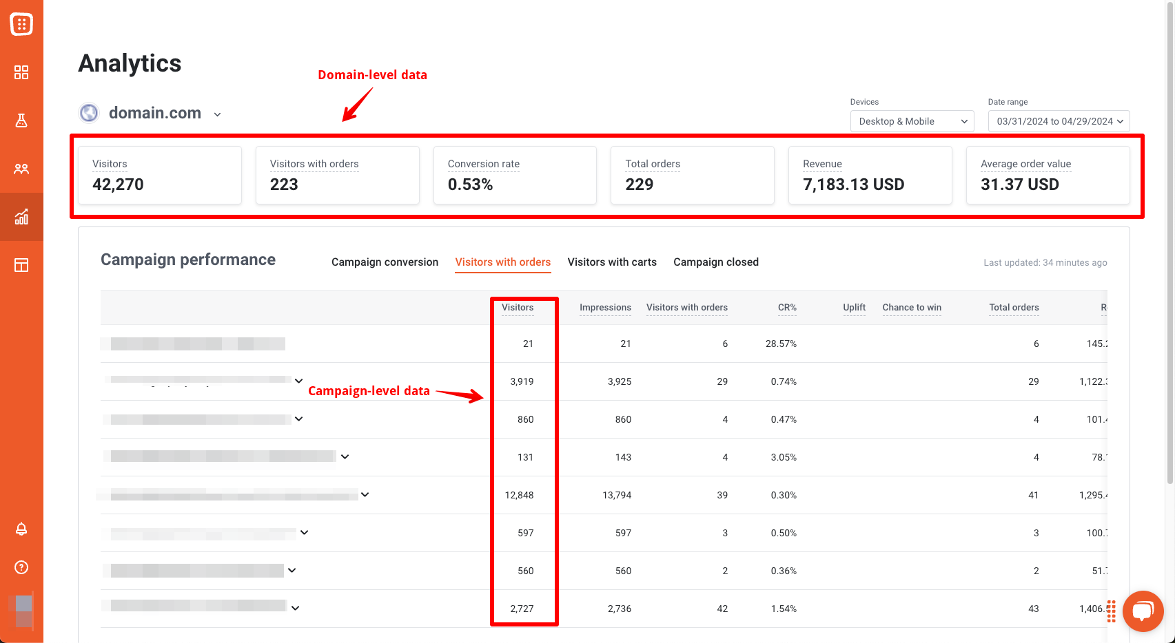
Track key metrics such as impressions, conversion rates, assisted revenue generated, and average order value.
Use these insights to optimize your pop-ups—tweak the design, message, or targeting rules to improve your results!
FAQ
What is a pop-up in marketing?
In marketing, a pop-up is a small overlay that appears on a user’s screen while they browse a website. It aims to capture their attention and prompt specific actions.
Are pop-ups good for marketing?
Yes, when designed and implemented correctly, pop-ups can significantly boost engagement and conversions by delivering targeted messages at the right time.
How does a pop-up work?
Pop-ups work by interrupting the user’s browsing experience with a message that aims to capture their attention and prompt action, such as signing up for a newsletter or making a purchase.
What’s the difference between a pop-up shop and a website pop-up?
A pop-up shop is a temporary retail space set up to attract customers in a physical location, often used for special events or promotions. A website pop-up, on the other hand, is a digital element that appears on a webpage to capture attention and drive specific actions such as sign-ups or purchases.
Wrapping up
Pop-up marketing, when done right, can significantly boost your engagement and sales.
Now that you understand the principles of context, relevance, and personalization, you can get the most out of your pop-up marketing efforts by designing pop-ups that generate interest in your target audience and drive purchases.
Remember, the key is to add value and enhance the customer experience, not interrupt it. So, start experimenting with these strategies today and increase those conversions!
Migration has never been easier
We made switching a no-brainer with our free, white-glove onboarding service so you can get started in the blink of an eye.
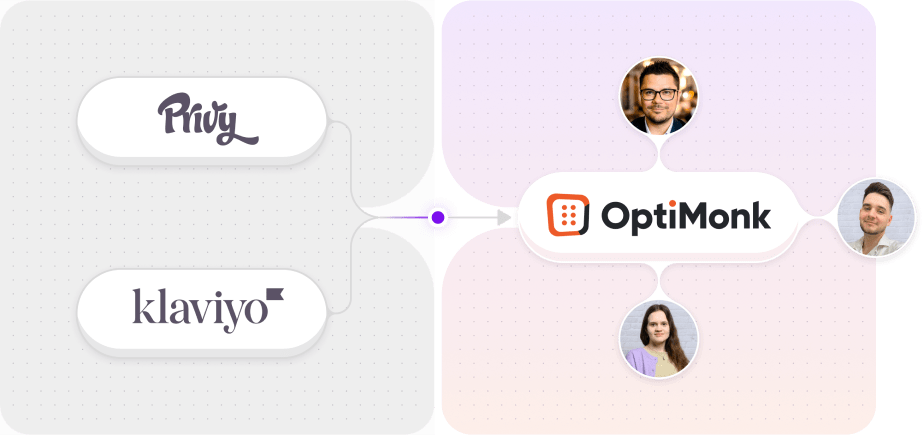
What should you do next?
Thanks for reading till the end. Here are 4 ways we can help you grow your business:
Boost conversions with proven use cases
Explore our Use Case Library, filled with actionable personalization examples and step-by-step guides to unlock your website's full potential. Check out Use Case Library
Create a free OptiMonk account
Create a free OptiMonk account and easily get started with popups and conversion rate optimization. Get OptiMonk free
Get advice from a CRO expert
Schedule a personalized discovery call with one of our experts to explore how OptiMonk can help you grow your business. Book a demo
Join our weekly newsletter
Real CRO insights & marketing tips. No fluff. Straight to your inbox. Subscribe now
Nikolett Lorincz
- Posted in
- Conversion
Partner with us
- © OptiMonk. All rights reserved!
- Terms of Use
- Privacy Policy
- Cookie Policy
Product updates: January Release 2025


